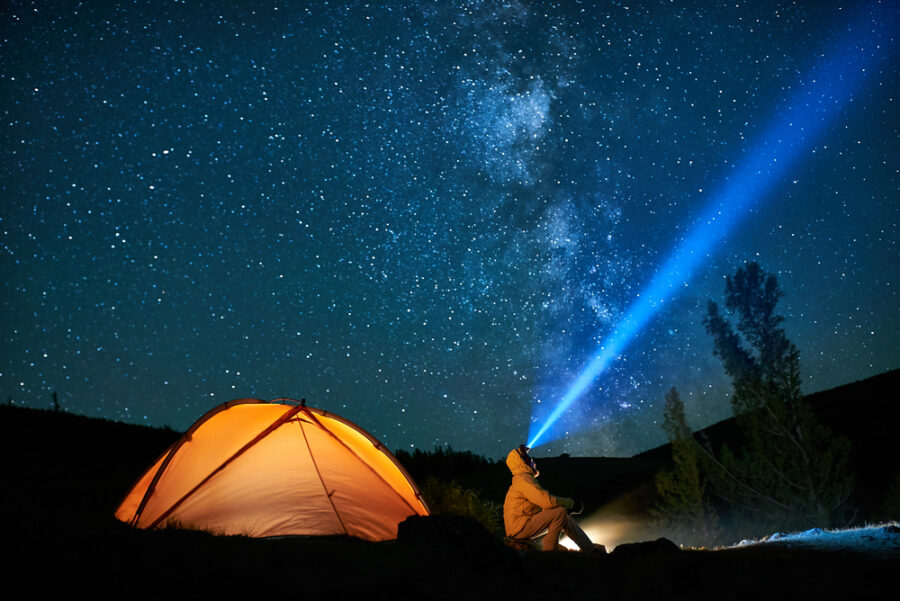Choosing the right flashlight for early morning or evening exercise is important for your safety. The last thing you want is to make an investment into something that isn’t bright enough or is too powerful for what you plan to use it for. Here’s the athletes’ guide to finding a flashlight that will fit your needs.
What are Lumens?
Lumens measure how bright a bulb is. The higher the lumens, the brighter the light. Flashlights can be as bright as a few tens of lumens to over a thousand. As you read through the guide, consider the area you commonly exercise. Is it an urban area? A well-lit subdivision? A remote trail? The darker your exercise area, the more lumens you’ll need.
The Walker
Lumens: 25-40
Walking means you’ll need to light up your footpath but you won’t need to light up the night for miles. The faster you walk, the more lumens you’ll want. Find a flashlight with a few different brightness settings and you can adjust your flashlight to whatever lighting a situation calls for. Make sure your flashlight will run for at least an hour, preferably more. Whether you walk in the evening or the early morning, a gentle 25-40 lumens is perfect to light your way.
The Runner
Lumens: 40-50 on roads, 100 for trails
Runners need a flashlight that shines brighter than a walker’s flashlight. Moving faster means you’ll need a light that can light up more of the path in front of you to help spot uneven patches of terrain or objects that could cause injury. 40-50 lumens is a good range if you run on roads or in lit urban areas. If you run on the road, you want to be sure your light is not so bright that it will blind passing motorists. For runners who get their miles in on remote trails and don’t have to worry about cars, 100 lumens is a good minimum. With the increased chance of uneven ground on trails, you want to be sure you can spot obstacles well before you need to react to them.
The Cyclist
Lumens: 200 in urban areas, 400 for trails and quiet roads
Hazards can sneak up on fast moving cyclists and cause serious injuries and equipment damage. In urban, well-lit areas, you’ll want flashlights that can reach at least 200 lumens. While streetlights and motorists can light up your route so that you can see any obstacles in your way, you’ll still want a light that is dedicated to lighting up your path. Cracks and potholes can be hard to see in the dark, and crashing in a busy urban area has the potential to be very dangerous. 200 lumens ensures your light will be seen by motorists, too. If your light is too dim it may blend in with the many lights reflecting off glass making it difficult for others to see you. If there’s anything in a cyclist’s path, they need plenty of time to stop and adjust course before a collision. If you ride on roads, keep in mind the blinding effect your light could have on passing motorists. 400 lumens is the minimum brightness you’ll want to aim for if you trail ride or ride along remote roads. You’ll likely be able to find a flashlight that is much brighter than that, but keep in mind that the lumen range for car headlights is 2,000-4,000. If you do spring for a high lumen flashlight, be aware of the blinding effect it could have on passing drivers and pedestrians and angle your light accordingly.
Whether you walk the dog every morning before work or slip on your running shoes for a quick jog after work, the right flashlight will keep you safe and help you get the most out of your exercise.
